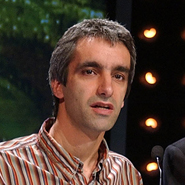In depth
Civil society calls for the abolition of nuclear weapons

Jordi Armadans
The International Conference For a Nuclear Free, Peaceful, Just and Sustainable World, a type of Alternative Conference for civil society before the Nuclear Non-Proliferation Treaty Review Conference (NPT), was held between 30 April and 2 May in New York. The Conference was convened by a long list of NGOs, networks and campaigns (ranging from North America's Peace Action and Nuclear Age Peace Foundation to the long-standing networks Abolition 2000 and the IPB, Britain's CND, the French Mouvement de la Paix and Japan's Gensuikyo, among others), and aimed to draw attention to the idea, often proclaimed and never implemented, of eliminating nuclear weapons.
The Conference was undoubtedly affected by the general climate of expectation surrounding the 8th NPT Review Conference. On one hand, the disappointment of the 7th Conference (which was held in 2005 and ended without any agreement) was fresh in the memory of those attending. Meanwhile, and on the other hand, was the new global climate created by the new presidency of the United States (which emphasises the creation of consensus, a multilateral perspective and the search for areas of trust between the various countries and powers) and the message from Obama in favour of a world without nuclear weapons. All in all, the NPT summit was seen as a very important opportunity to create some progress, albeit minimal. Apart from his messages, Obama had 'prepared' the NPT Summit by spelling out some of his visions: organising a Nuclear Security Summit (dealing with the possible transfer of nuclear weapons to terrorist groups) and transforming its defence doctrine by reducing the importance and influence of nuclear weapons.
All these factors therefore gave the NPT Review Conference a dimension of dynamism and expectation that provided encouragement for the Alternative Conference.
In fact, simply holding a Conference for civil society was a clear reflection of all the above. The presence of civil society – which is always possible in some way at the NPT Review Conferences - should not be confused with the strength to convene and organise an alternative Conference for civil society, apart from the Official one. An alternative Conference has not always been convened at the same time as an NPT Conference. This was therefore a sign of the resurgence of anti-nuclear feeling.
The high turnout by the public was another factor which showed the success of the initiative, and the organisers' forecasts were easily exceeded. Almost 1,000 people from all over the world came together at the Riverside Church (an imposing church in Harlem, on the banks of the Hudson River, which has hosted numerous events focusing on peace and social justice). Despite the size of the Church facilities, there was not enough room for everyone who had registered to attend.
Finally, another factor when assessing the success of the event was the decision by Ban Ki-moon to participate in the Conference's closing ceremony. The decision, which was received with great pleasure by the organisers and many of the participants, was indeed very significant: first, because it showed that the Alternative Conference had sufficient momentum and credibility for a UN General Secretary to decide to become personally involved. Second, because it highlighted Ban Ki-moon's long-standing commitment to the demand for a world without nuclear weapons.
The Conference, which ended with a large demonstration by 15,000 people through the streets of the centre of New York, mainly involved people from the traditional peace movement of the nuclear powers. Among them was an enormous Japanese delegation which gave the entire event a highly symbolic dimension. Your correspondent was the only participant from Catalonia and Spain.
There were many workshops, experiences, debates created and thoughts expressed, strategies shared and opinions gathered, as is usually the case at an event like this (including groups undertaking civil disobedience against military installations, experts on influencing members of parliament and governmental officers, and all sorts of analysts and activists), but one idea was a constant theme at the Conference.
The peace movement has always had a difficult relationship with the NPT: on the one hand, it has been recognized as being an important tool for containing nuclear proliferation; -but, on the other, it is still seen as an instrument that reaffirms the hierarchy of the nuclear powers and has not moved the issue of nuclear disarmament forward.
In this context, the Conference consolidated one of the key commitments that the peace movement has made in recent years to overcoming this ambiguity at the NPT. Despite this approach not being new, the experience and progress made in recent years in disarmament (the Mine Ban Convention of 1997 and the Convention against cluster bombs of 2008) has made the peace movement into a consolidated possible and necessary alternative: all right, we will use the NPT but we will work creating a new framework, such as a Convention for the prohibition of nuclear weapons. This proposal has already achieved broad consensus within civil society, is gaining ground in the academic world and, at state level, is attracting increasing support.